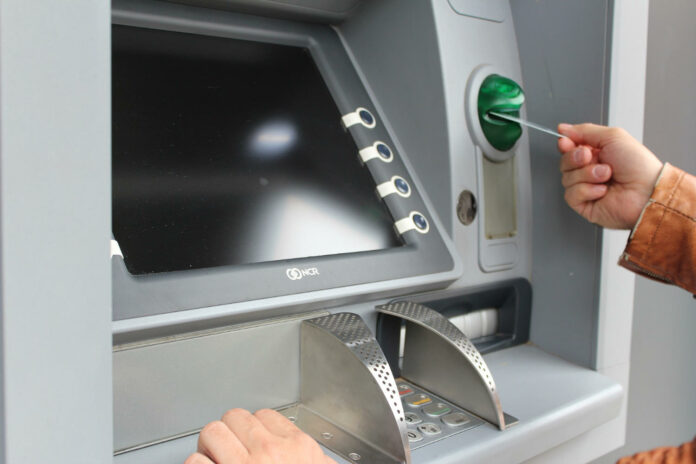
Are lazy teenagers blocking our coin change machines? That’s how English-speaking media are reporting on a trend that went viral, i.e. it got incredible attention online. In a video, a teenager shows how he slides banknotes worth 1,100 Australian dollars into a coin change machine and gets rolls of coins in return. At home, he opens the rolls and searches them for valuable coins: error coins, commemorative issues etc. Anything worth no more than face value goes back to the bank; interesting coins are sold via eBay or other channels. What he’s doing is referred to as “coin noodling”.
Systematically Looking for Treasures
According to the Daily Mail Online, those who go to change machines to systematically search for special coins consider themselves 21st-century treasure hunters. They just take advantage of a good investment opportunity to make easy money.
The Daily Mail Online even ran a headline stating that banks were “furious”. Actually, the article merely quotes bank customers who complain about the fact that small and medium-sized businesses run out of change due to coin noodling.
The newspaper ascribes the trend to the Gold Coast Picker channel, which posted a video on coin noodling on YouTube, TikTok and Facebook. In the clip, a teenage “gold prospector” claims that he makes at least 10 percent profit. What he doesn’t take into account is the time that goes into looking at all the coins.
What isn’t mentioned either: coin noodling isn’t a new phenomenon. When Switzerland replaced its silver circulation coins with copper-nickel issues in 1968, Swiss people were systematically looking for the old coins for years. After all, the silver boom had increased the coins’ bullion value well above face value. Across the world, collectors of contemporary coinage got some rolls of coins from banks or change machines, hoping to find some rare pieces at low cost.
The difference between collectors and coin noodlers is: for collectors, going to the change machine is an exception rather than a rule. To them, it’s about their collection and the pleasure of collecting as a pastime, not about selling coins immediately for a profit.
Does Coin Noodling Make Money?
Speaking of making a profit. Time and again, sums are mentioned that one can supposedly earn by selling treasures found at the coin change machine. Ten to a hundred times the face value, for example. Or “up to 2,000 euros” in your wallet, i.e. in circulation, as the “Kreiszeitung” ran. In the article, one learns that this 2,000-euro piece was an extremely rare coin (a 2-euro coin from Monaco with the portrait of Grace Kelly); so you shouldn’t get your hopes up about actually finding such a coin in everyday life.
In fact, there are always offers on eBay trying to sell coins at horrendous prices. But are these coins actually sold at such prices? Probably only if you find a customer that doesn’t know much about the subject. Speaking of knowledge: coin noodlers are neither collectors nor coin experts. YouTube videos that are praised in the comments as “great” or “instructive”, show how someone gets coins from a change machine and searches for treasures – that isn’t what I would call high-quality expert knowledge. To identify error coins or other precious issues, noodlers consult standard works at best.
Indeed, you should be careful when it comes to this kind of advice. In one video, someone demonstrates how he searches euro coins he found in circulation for error coins and particularly rare commemorative issues. While doing so, he makes all sorts of claims about how these errors came about. In the comment section it becomes clear that some viewers know way more about the subject and point out that not a single error coin is among the issues shown – they are merely minting coincidences or within the range of minting tolerances. And thus they are anything but an investment. This is about the level of most coin noodling videos.
If you want to know how not to fall for such offers and how to build up solid knowledge, read the articles written by our author numiscontrol!
Who Really Makes Money from Coin Noodling?
Yes, it’s certainly possible to find rare coins by withdrawing huge amounts of coins from change machines. However, this approach requires a lot of time. Can you make a living from it? Probably not. Does it help with collecting? Maybe. Is it fun? You have to decide for yourself whether you find such a brute force approach satisfying. Is it a new global trend? New: definitely not. A global trend? If you look at the reports on current instances of coin noodling, it rather seems as if an online hype was being elevated by media reports. Australia’s banking system seems to be able to cope with coin noodling, and the middle class isn’t collapsing due to a widespread lack of cash either.
Online, coin noodling is propagated mainly in videos on social media. Gold Coast Pickers doesn’t only look for precious coins, but also for Matchbox cars and VHS tapes that can be sold for a profit. Another channel, PJ’s Coin Capers, specialises in Australian circulation money that can be found in wallets or rolls of coins. With such videos, content creators can increase their amount of subscribers, get likes and boost their brand’s value through affiliate links for microscopes, magnifying glasses and specialist literature from online retailers. For them, it’s definitely worth it to cater to the interest in coin noodling.
In its usual sensational style, the Daily Mail covered the subject.
The Kreiszeitung reported on the possibilities of making money from selling treasures found in circulation money (in German).


